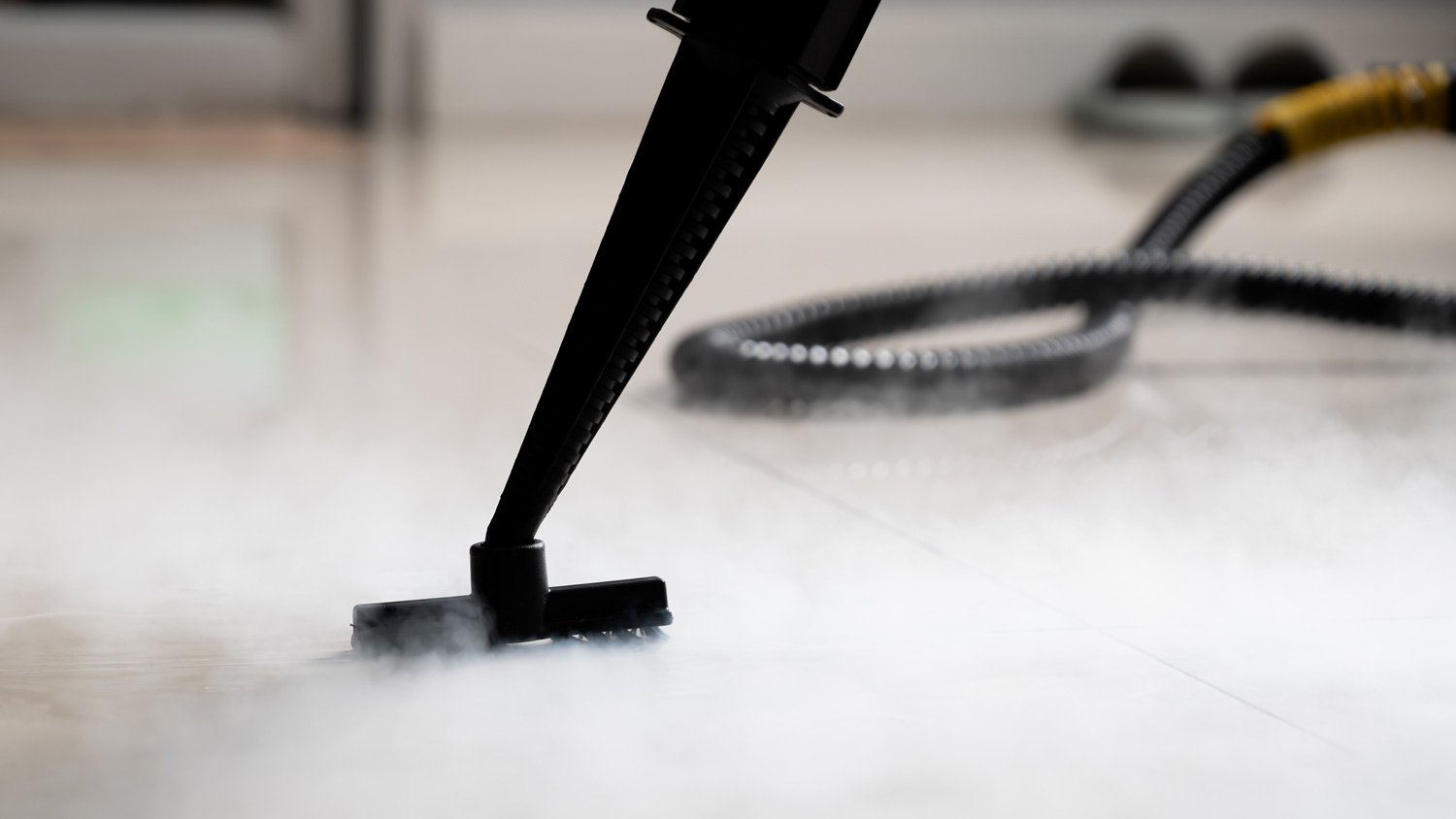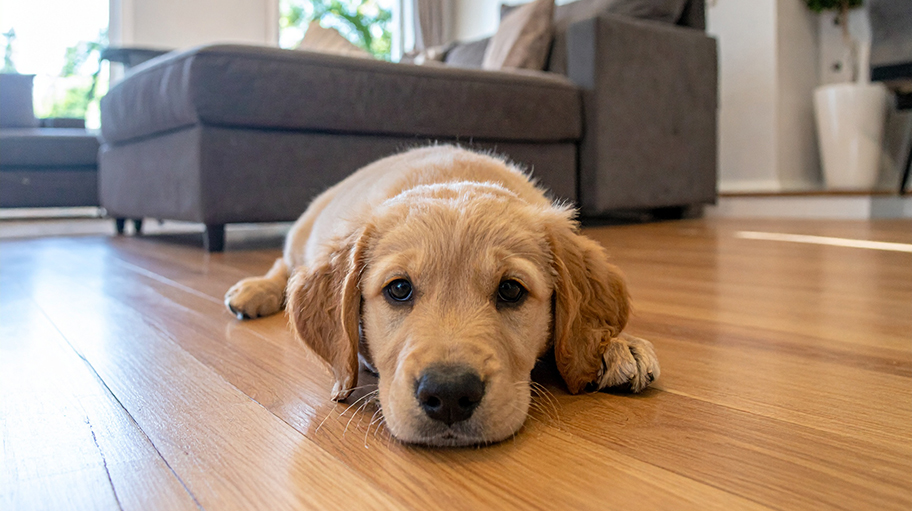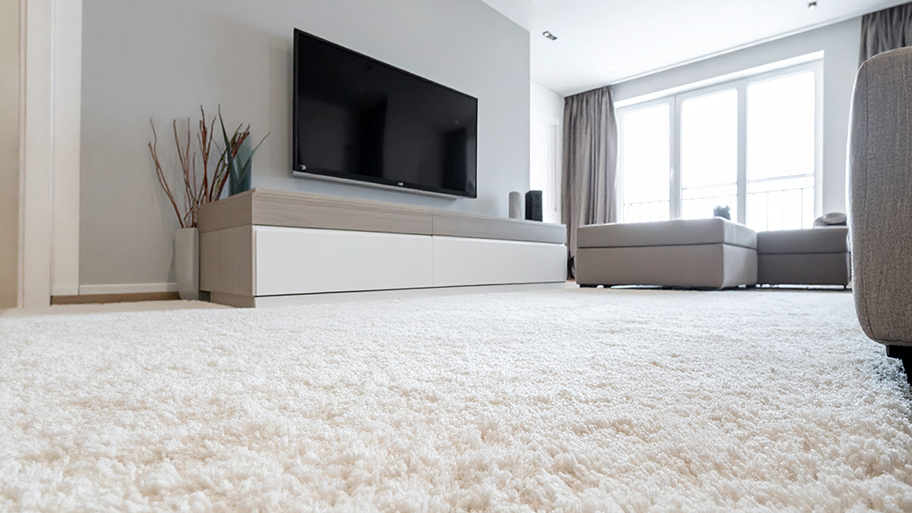
Steam cleaning keeps floors spotless, but not all flooring materials are compatible with steam. Use this guide to know when (and when not) to steam clean vinyl floors.
Maintain your floors without chemical cleaning products


Steam cleaning is safe and effective on some tile floors, but not all.
Ceramic, porcelain, and linoleum floors are the safest to steam clean.
Stone, wood, and vinyl floors should only be steam-cleaned if properly sealed.
Steam cleaning is an excellent way to deep-clean dirt, stains, and grease build-up.
Thanks to its powerful combination of heat and moisture, steam can clean various surfaces around the house. It breaks down grime on refrigerators and toilets, kills bacteria on clothes and bedding, and polishes glass and stainless steel. Steam is also a natural substance devoid of harsh chemicals. Considering these benefits, steam cleaning your tile floors seems like a no-brainer. Unfortunately, it’s not so simple. We’ll explain everything you need to know about whether you can steam clean tile floors below.
The short answer is yes, steam effectively cleans many types of tile floors. It softens dirt, grime, and stains that build up over time, allowing you to mop the floor easily and thoroughly. Steam cleaners are also particularly effective at washing the grout between tiles.
However, the heat and moisture can damage some floors, causing cracking, peeling, and discoloration. You should only steam clean floors made of specific materials or floors that have been properly sealed. Read on to find out if your floor is safe to steam clean.

Since tile floors come in an array of materials, here are the most common types that are safe to steam clean.
After being fired at thousand-degree temperatures, porcelain tile floors are resistant to heat and moisture, making them safe to steam clean. In fact, steam cleaning is one of the best methods to deep-clean porcelain floors.
Ceramic tile floors, like porcelain, are made of kiln-fired clay that can withstand the high temperatures of steam cleaning. Whether you have a gentle steam mop or a high-powered steam cleaner, it’s safe to use on ceramic flooring.
Made from miscellaneous materials like linseed oil, sawdust, and powdered cork, linoleum floors will glisten like new after steam cleaning.
These tile floors are more susceptible to damage from steam cleaning unless they’ve been sealed or the manufacturer's instructions say steam cleaning is safe.
Most vinyl flooring isn’t safe to steam clean. The high temperatures mixed with intense water pressure cause vinyl tiles to warp, peel, and separate.
Stone floors like marble and granite are porous, which means moisture from steam cleaning can collect inside the material and lead to cracking.
Wood and moisture don’t get along, whether in furniture or flooring, so homeowners should avoid steam cleaning unless their hardwood floors are specially sealed. Steam causes unsealed wood to warp, chip, and peel.

Even though steam cleaning is straightforward, a few tips can help you get fresh, beautiful floors every time—just like a professional cleaner.
Vacuum or sweep the floor: This removes anything that could get stuck in your steam cleaner or scratch the floor.
Set up your steam cleaner: Fill it with water and affix whatever attachment you want to use.
Steam clean the grout: Steam clean a small section of the floor, then scrub the grout with a soft bristle brush.
Steam clean the entire floor: Once you’ve removed dirt and debris from the grout, steam clean the entire floor one last time.
Let the floor dry: Avoid walking across the floor after steam cleaning since it will be wet. Tile floors should dry within 5 to 20 minutes.
From average costs to expert advice, get all the answers you need to get your job done.

Steam cleaning keeps floors spotless, but not all flooring materials are compatible with steam. Use this guide to know when (and when not) to steam clean vinyl floors.

Many homeowners want to know how often they should mop their floors. Depending on the room and household size, it may be more often than you think.

Disinfecting floors means ensuring they’re clean and that you’ve killed any harmful germs left on the surface. Learn how to disinfect hardwood floors in a few simple steps.

If your carpet is looking worse for wear, it is a good idea to hire a pro. This guide will help you look out for common carpet cleaning scams.

Don’t stress about dog urine (and the smell) ruining hardwood floors. Read about different DIY and natural methods for removing pet urine from hardwood floors.

You could have all the ingredients to remove carpet stains in your pantry. Keep reading to learn how to make your own DIY carpet stain remover.